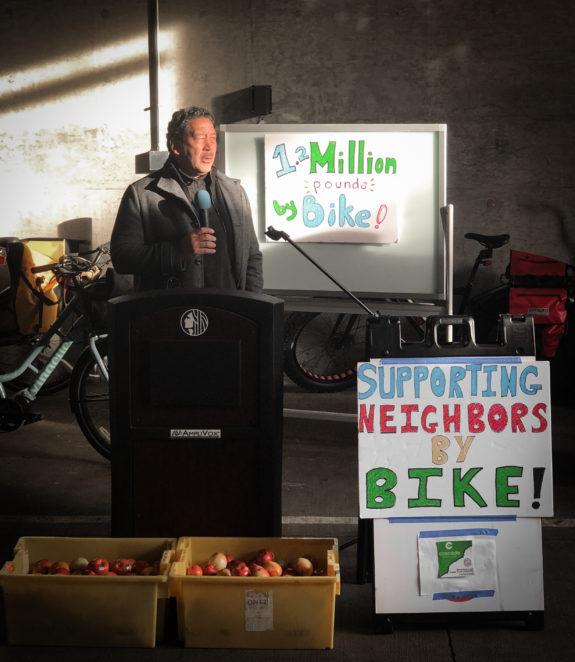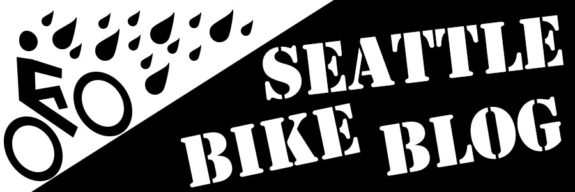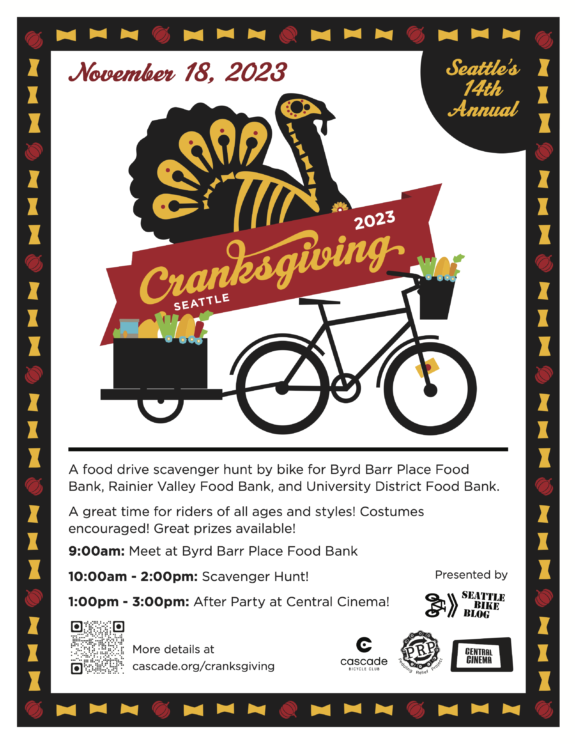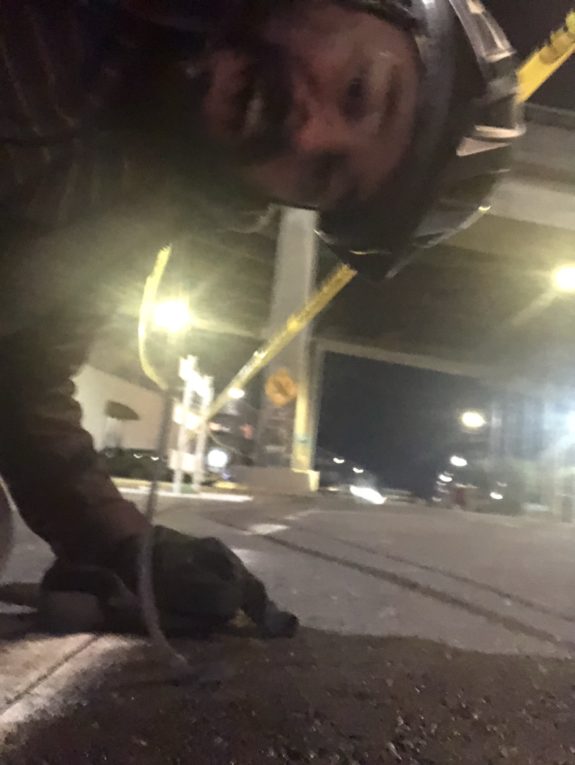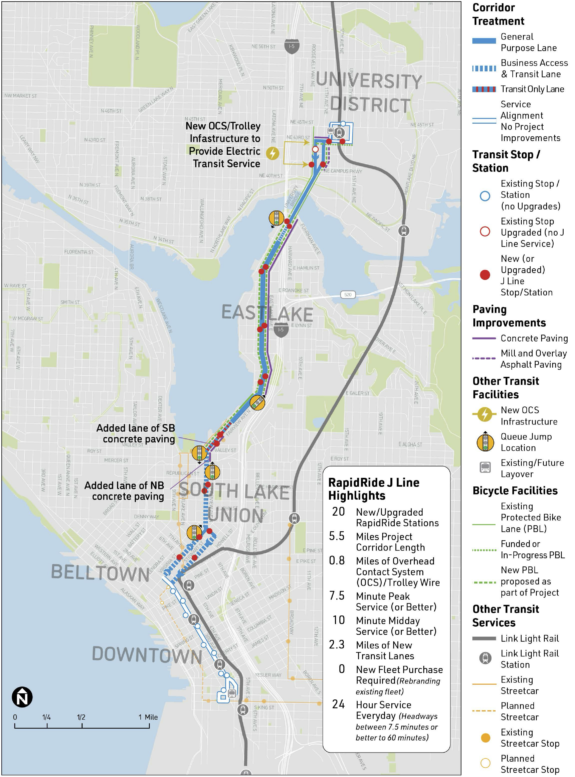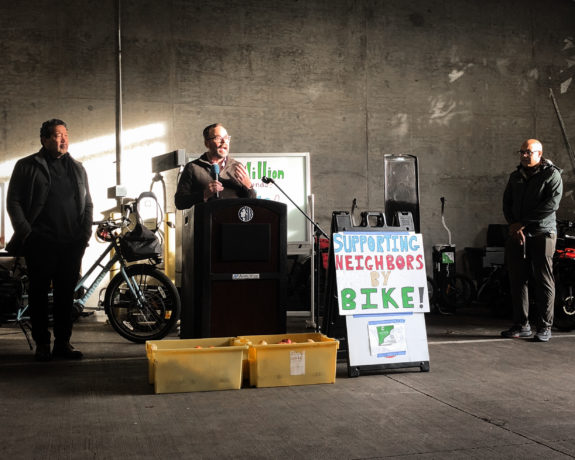
Volunteers for the Pedaling Relief Project have hauled 1.2 million pounds of food by bike since 2020, all to support local food bank operations. That’s equivalent to about 1 million meals.
“It helps us and the other food bank partners achieve their mission at a time when volunteerism is not keeping pace with the growth in need for our services,” said U District Food Bank Executive Director Joe Gruber of the Pedaling Relief Project during a celebration press event Friday morning. “They’ve responded to our need for more volunteers creatively and thoughtfully.”
Seattle Bike Blog has been cheerleading for Maxwell Burton and the Pedaling Relief Project since the start, and I am amazed by the sheer volume of volunteer power people bring to this effort every week even years later. It’s a really cool thing to be part of, and everyone should be proud of their contributions. To join a Pedaling Relief Project team, check out their online schedule. They currently partner with the U District Food Bank, Byrd Barr Place Food Bank, the ACRS Food Bank, White Center Food Bank, and Food Not Bombs. Cargo bikes are of course welcome, but they also have trailers that are compatible with almost any bike. The Pedaling Relief Project and Seattle Bike Blog are also teaming up to produce Cranksgiving November 18.
By using bikes, volunteer riders across the area have prevented about 18,000 pounds of carbon from being released into the atmosphere, all while having fun, building community, and helping to put food on people’s tables. “We believe we are the largest carbon-free food delivery program in the country,” said Cascade Bicycle Club Executive Director Lee Lambert, “and I’ll keep saying that until I’m proven wrong.” He said he hopes to see communities across the country copy their model.
Mayor Bruce Harrell said he felt “giddy” during the event, praising the project as “a perfect alignment of what makes this city great.” The project “has taken the best of our values, environmental sustainability, thinking about those who are most vulnerable…and put them together.”
